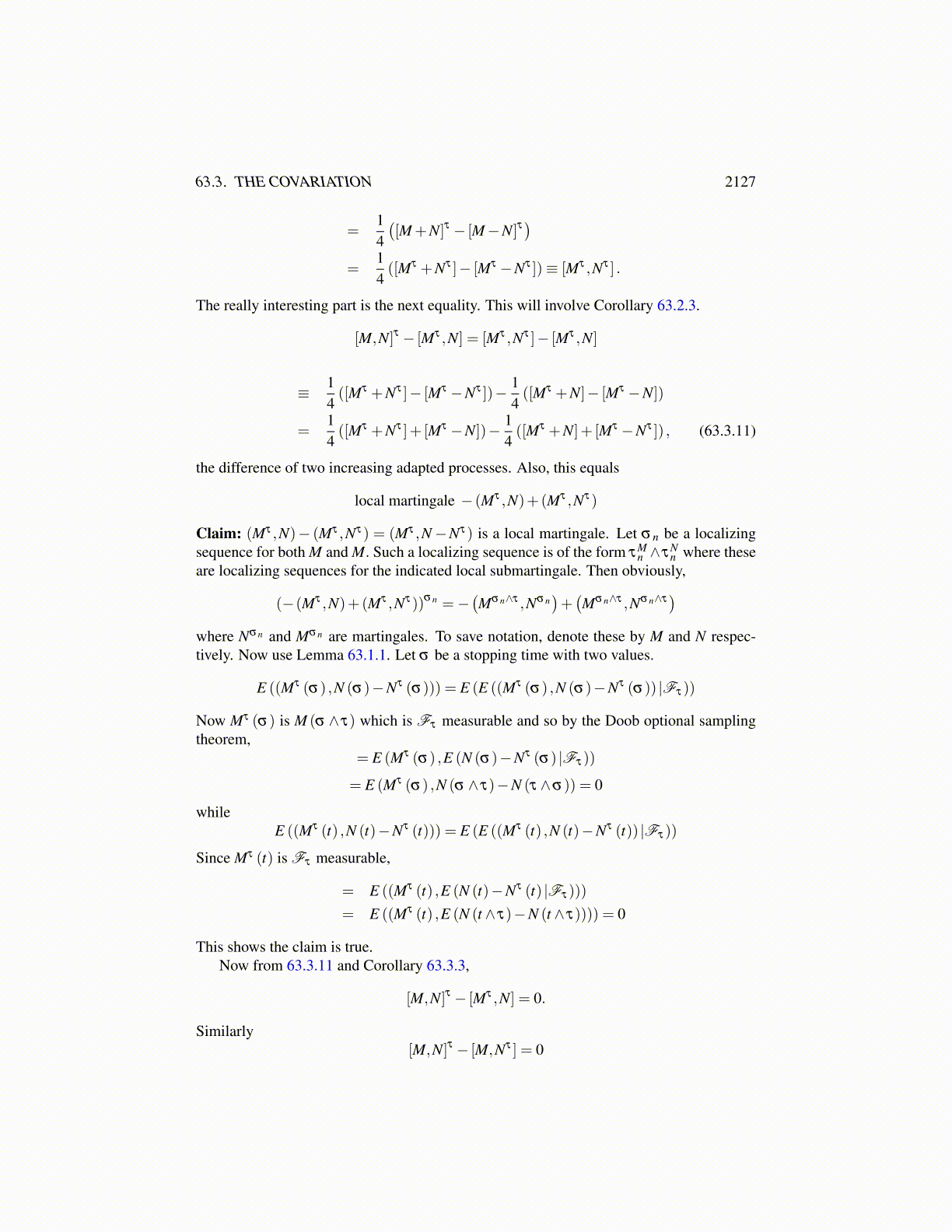
63.3. THE COVARIATION 2127
That is, the quadratic variation of the stopped local martingale makes sense a.e. and equalsthe stopped quadratic variation of the local martingale.
This has now shown that
||Mαn (t)||2− [M]αn (t) = ||Mαn (t)||2− [Mαn ] (t)
= Nn (t) , Nn (t) a martingale
and both of the random variables on the left converge pointwise as n→ ∞ to a functionwhich is Ft measurable. Hence so does Nn (t). Of course Nn (t) is likewise a functionof αn ∧ t and so by Proposition 63.2.2 again, it converges pointwise to a Ft measurablefunction called N (t) and N (t) is a continuous local martingale.
It remains to consider the claim about the uniqueness. Suppose then there are twowhich work, [M] , and [M]1. Then [M]− [M]1 equals a local martingale G which is 0 whent = 0. Thus the uniqueness assertion follows from Corollary 63.2.3.
Here is a corollary which tells how to manipulate stopping times. It is contained in theabove proposition, but it is worth emphasizing it from a different point of view.
Corollary 63.2.6 In the situation of Proposition 63.2.5 let τ be a stopping time. Then
[Mτ ] = [M]τ .
Proof:
[M]τ (t)+N1 (t) =(||M||2
)τ
(t) = ||Mτ ||2 (t) = [Mτ ] (t)+N2 (t)
where Ni is a local martingale. Therefore,
[M]τ (t)− [Mτ ] (t) = N2 (t)−N1 (t) ,
a local martingale. Therefore, by Corollary 63.2.3, this shows [M]τ (t)− [Mτ ] (t) = 0.
63.3 The CovariationDefinition 63.3.1 The covariation of two continuous H valued local martingales for H aseparable Hilbert space M,N,M (0) = 0 = N (0) , is defined as follows.
[M,N]≡ 14([M+N]− [M−N])
Lemma 63.3.2 The following hold for the covariation.
[M] = [M,M]
[M,N] = local martingale+14
(||M+N||2−||M−N||2
)= (M,N)+ local martingale.